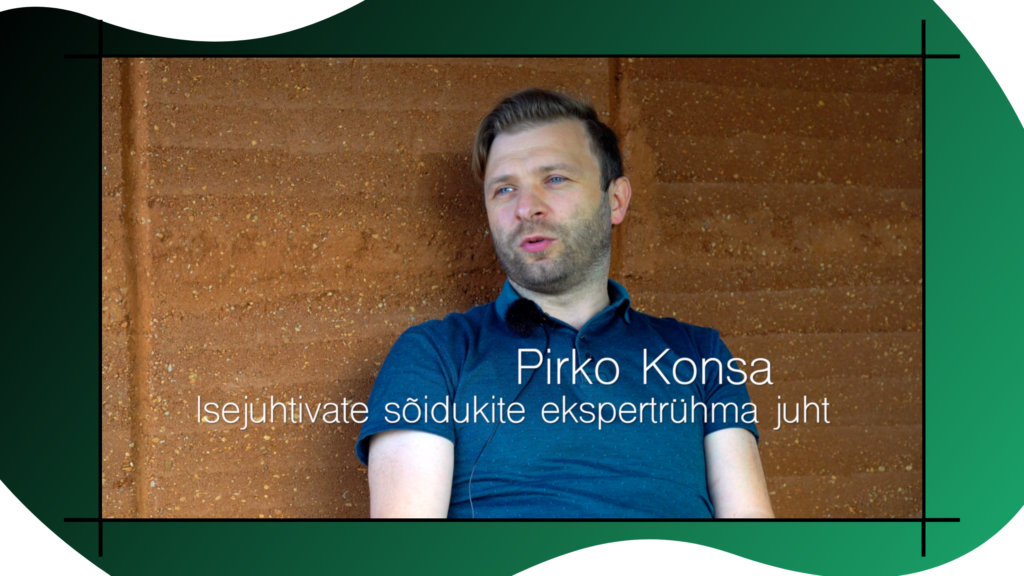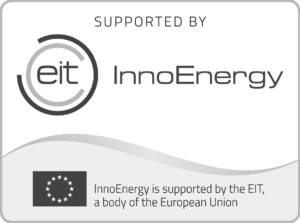23.09.2019
Pirko Konsa: Estonia could mark itself as the testing environment for autonomous technologies in the world
Tehnopol made an interview with Pirko Konsa, the head of the expert group on self-driving vehicles, who talked about self-driving buses and their integration in our traffic culture. Read the article and find out whether self-driving buses would reduce traffic jams, which would be the best way to use the self-driving buses and how Estonia can contribute to the development of this area.
What can a self-driving bus in Kadriorg do today?
The self-driving bus Navya in Kadriorg is capable of driving almost all of its lane independently. Today it still needs an operator to open the doors and help people.
How is it different from the self-driving bus at TalTech?
The big difference is that the bus at Kadriorg has passed several road safety tests in different countries in order to be fit for the street. The bus developed by TalTech has not yet done so. Since I know what both TalTech and Kadriorg buses can do, I think Estonians have nothing to be ashamed of. A self-driving car is a very promising platform.
If all cars were self-driving, would there be traffic jams?
It depends on whether we have private self-driving cars or we use shared vehicles. If they were private, there would probably be more traffic jams, because apparently we would send these cars on their own to drive even more. But with platforms like the one we are currently testing in Kadriorg, I believe that there will be much less cars on the street.
Will the flow of traffic get smoother with self-driving cars?
Certainly will. No self-driving vehicle is developed to violate traffic laws, but to follow them. People are so much more creative and they can always choose whether to follow any rules or not. As there are likely to be fewer accidents, there will also be less traffic jams. Traffic would be calmer and less aggressive.
What is the most optimal use for the self-driving bus?
Today, the best reason to use a self-driving bus is to make public transport even more convenient and faster. The reason we all use personal cars today is that public transport does not meet with our needs, and bus stops are too far away and walking there is time consuming. By combining the traditional buses with the small self-driving buses, we can make public transport a lot more convenient. I believe, for example, such buses could start to carry people in suburbs with lower traffic speeds. It is certainly worth thinking more broadly. The bus doesn’t have to be just the bus. This bus can also be a meeting room, a doctor’s office, etc.
What have been the main bottlenecks in law when bringing a self-driving bus to the street?
So far, the world with cars has been very driver-centered and now suddenly there is no driver. Here are several questions. On the one hand, we have a lot of regulations that require the driver to be in the car and all the laws are written in quite detail, what that driver needs to know, and so on. On the other hand, there is still relatively little practical experience of how a self-driving bus can handle driving on the street on its own and how to evaluate this technology at all, because the problem is not even whether a self-driving car can handle another self-driving car. But because people are unpredictable, we simply cannot teach buses all the possible situations that people may face in traffic. What the country can do is to allow testing. We should think through the possible risks, but not search for the reasons to not allow testing. It is always easier to make a law when you already have some experience, so it is worth creating a flexible atmosphere for gathering experience, and then you can adapt the law correctly.
How is the self-driving bus service different from a regular minibus service?
The vast majority of self-driving buses are electric and one very big difference is that the electric vehicle has significantly fewer moving parts. Before driving, make sure that all sensors are operational. Even if the operator is not on the bus, there is still some operator somewhere away watching the health of the bus. This means that the bus constantly sends information about its health to somewhere. It is much easier to do preventative service to understand if something is going to break. Bus service is no longer so much on the bus driver’s shoulder, but the information system learns and understands when and what to fix. It will certainly also be more economical and cheaper.
How can Tehnopol help with the development of a self-driving bus?
Tehnopol has a unique opportunity to be one of the partners with TalTech. Estonia could very clearly identify itself as the testing environment for autonomous technologies in the world. We have a lot of companies in Estonia that have the right experience and also the Estonian legislation and the Estonian state are very flexible in this regard. We could be the place on the world map where new solutions are tested in practice and be an open place for developing new services and products. Starship, Bolt, Cleveron, Cybernetica, Maanteeamet – all of them located right here, and that is a huge potential that should be used.
The biggest greentech conference GreenEST Summit is coming on the 29th of October! This year the conference will focus on the mobility and logistics. The conference brings together experts, green technology companies and investors from both the public and private sectors across Europe. The conference will be opened by Kersti Kaljulaid, the President of the Republic of Estonia, and one of the keynote speakers will be Paul Tasner, an inspirational and humorous speaker who is also a TED talks speaker. By using the promo code “greenestuudis” you get a 10% discount on your ticket.













